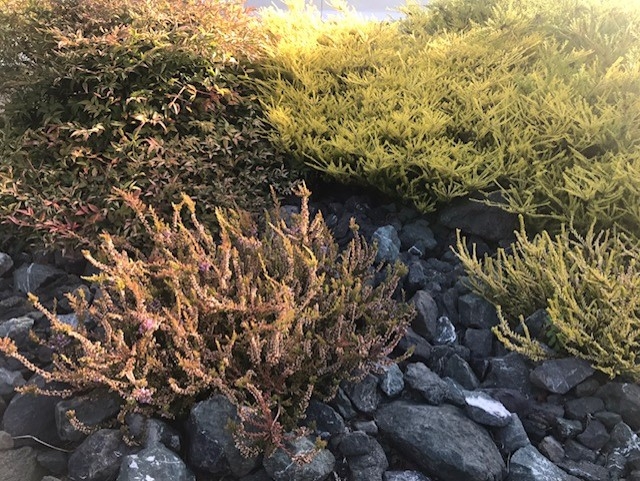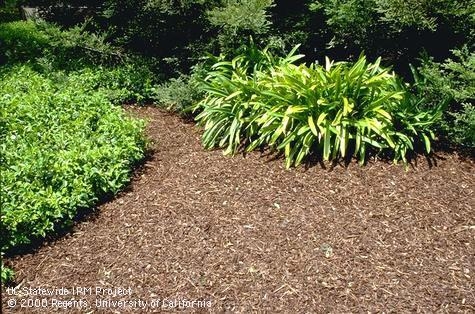
Ask Master Gardeners about mulch and they will start ticking off benefits: protects soil from compaction and extreme temperatures, improves soil structure and feeds soil microbiology, suppresses weeds, retains moisture, supplies nutrients, and supports the soil food web. But not all mulch is created equal. One mulch, arborist wood chips, can accomplish everything on the list, but isn't suited for use around veggies and delicate annuals; other mulches admirably fill those and other niches, and then there are a few that should generally be avoided.
First, what is mulch? Basically, anything that covers the ground. It can be organic, synthetic, or rock. It can even be a living ground cover. Vegetables are often mulched with straw or some mixture of shavings and manures – materials that not only protect the soil but rapidly break down. Trees, shrubs and woody perennials benefit from woody mulches that last years and feed both roots and soil biota. Flower beds can thrive with their own cuttings serving as mulch as can smaller, more delicate shrubs.
Stone mulches – rocks, gravels, pebbles, and decomposed granite (DG), are good for fire-scaping and so are useful near buildings and to break up planting beds into islands that discourage fire spread. They protect the soil from adverse weather but do not feed it. Most people line stone material with landscape cloth to facilitate its removal when desired and to keep the stone on the surface rather than sinking into the root area. Unfortunately, the landscape cloth will at some point need to be hauled to landfill.
Then there are the green and animal manures. Green manures include grass, shredded leaves, and small garden clippings. Animal manures are rich in nutrients but need to be composted before use. They are typically mixed with green manures or soil amendments. These mulches are useful in kitchen gardens and annual flower beds.
Bark mulch looks good and can feed soil eventually, but its purpose is to repel water and germs while gardeners want to invite microbes and retain moisture in the ground. Bark can also float away with rain or irrigation.
Arborist wood chips, on the other hand, are usually delivered freshly chipped after arborists prune or remove trees. This is the best mulch in terms of moisture retention, weed control, and sustainability. This chipped material is mostly wood but also includes bark and some green material. Because of this variety in size it resists compaction, feeds the soil, and invites colonization by a diverse soil biota. Best, it's usually free.
- Inorganic mulches such as landscape cloth and plastic sheets can be useful in commercial farms, but they are less useful in home gardens and do not benefit the soil. Additionally, they deteriorate rapidly into landscape trash.
- Cocoa bean: this mulch was popular for a while because of its deep brown color and chocolate smell. But not only does it tend to become moldy if applied too thickly and to blow away easily when dry, but it is poisonous to dogs.
- Rubber mulch: Typically made out of tires it contains the same heavy metals tires have – cadmium, chromium, and zinc. As the mulch breaks down, these metals are released into the soil.
With all the good mulches to choose from, gardeners shouldn't forget living plants. Think about carpets of creeping thyme or meadows thick with clovers. They feed and protect the soil, suppress weeds – and do it all while looking great and attracting pollinators to your garden. What's not to like?
